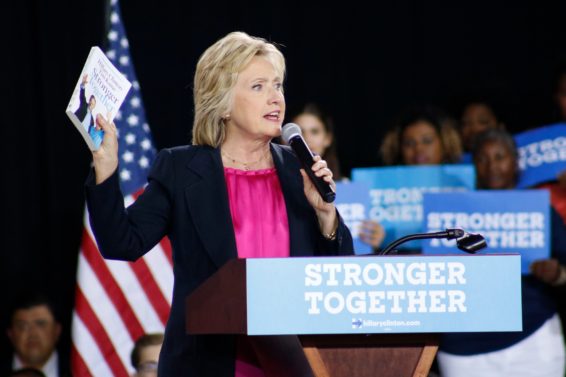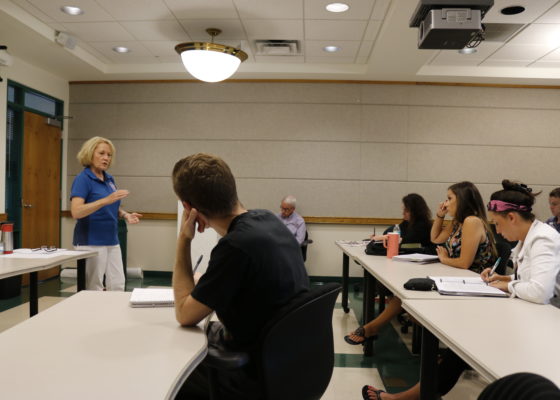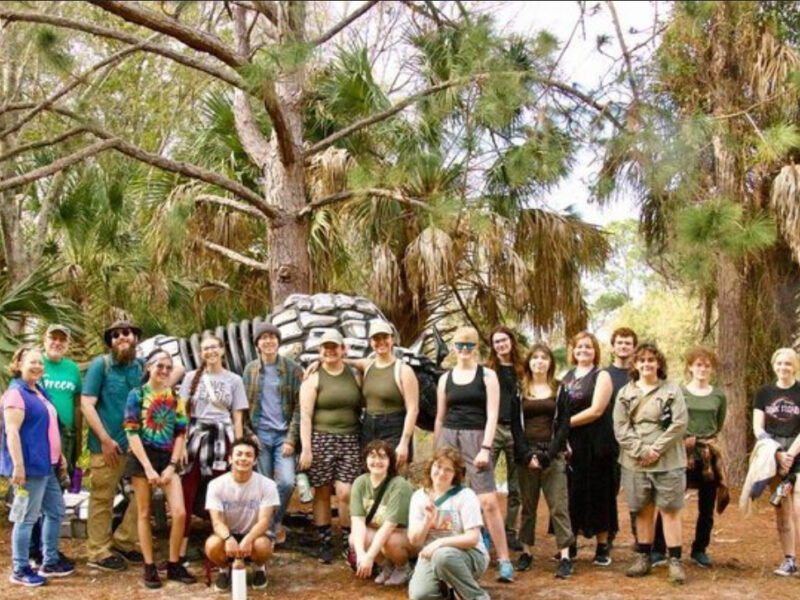Early last month, the governmental affairs director for Student Government hosted a voter registration event on Harborwalk.
Getting students to vote is vital for the future, said Madeline Friese, 20, a sophomore majoring in environmental science and policy.

“I don’t think students understand the impact that government has on their lives,” she said. “If you aren’t educated about how the government works, then why would you participate in it?”
That’s a question that resonates in this year’s presidential race, especially in the camp of Democratic candidate Hillary Clinton.
Most polls show that Clinton – buoyed by a strong performance in the Sept. 26 debate – has a narrow lead over Republican Donald Trump nationally and in several key battleground states.
However, some polls also show that while Clinton leads Trump among voters 18 to 29, up to a third of the voters in that group plan to vote for either Gary Johnson, the Libertarian candidate, or Jill Stein, the Green Party candidate. Some tell pollsters they plan to skip the election.
According to Real Clear Politics, which tracks and averages polls daily, Clinton was at 43.4 percent as of Sept. 29, with Trump at 41.1, Johnson at 7 and Stein at 2.4. In a two-way race, Clinton led Trump 47.5 to 45 as of Oct. 1.
As the New York Times reported last week, young voters haven’t shunned the two major parties on that scale since Ross Perot ran as a third-party candidate in 1992 – a development that has cut into Clinton’s thin margin for error.
According to the Pew Research Center, voters between the ages of 18 and 29 have been registering independent of either major party at a rate faster than any other generation.
Clinton and her representatives have been working hard to court younger voters, with rallies on college campuses and outreach efforts on social media.
At a rally at USF Tampa on Sept. 6, Clinton called the Nov. 8 election crucial to Americans’ future.
“Vote this year like your future depends on it, because it does,” she said.
Last week Clinton campaigned with former Democratic rival Bernie Sanders – who struck a chord with millions of younger voters – at the University of New Hampshire while Michelle Obama spent a day at college campuses in Philadelphia and Pittsburg.
This week President Barack Obama, Vice President Joe Biden and U.S. Sen. Cory Booker, D-N.J., will all be in Florida to stump for Clinton and encourage young people and minorities to register to vote.
With its trove of 29 electoral votes, Florida is a key battleground state. Obama twice carried the state by razor-thin margins, and some pundits say Trump cannot win the presidency without carrying Florida.
Florida is accustomed to the national spotlight. In a protracted 2000 election that ended with a 5-4 decision by the U.S. Supreme Court, George W. Bush carried Florida by 537 votes and won the presidency despite finishing half a million votes behind Democrat Al Gore in the national popular vote.
In both Florida and New Hampshire, third party candidate Ralph Nader may have pulled enough votes from Gore to give the presidency to Bush.
In Pinellas County since 2004, people in the 18 to 25 age group have had a higher percentage of registered voters than any other age group, according to the county supervisor of elections office.
But during that period voter turnout in general elections in the 18 to 25 group has lagged behind every other age group. Voters in the 26 to 30 group had the second worst turnout and voters 41 and older had the best turnout.
Yet voter turnout in presidential elections in the 18 to 30 age group in Pinellas has surpassed the national average by nearly 10 percentage points since 2004.
Deborah Clark, the supervisor of elections in Pinellas, said that her office begins reaching out to potential voters as soon as they enter elementary school.
According to Clark, there are two programs that her office offers across the county, and they both reach students long before they’re eligible to vote.

“We set up polls in every school for the first-graders through the 12th grade,” Clark said. “We include real elections, student government elections, and kiddie ballots for the younger kids. It’s set up like a real polling place, and they use the same ballots mommy and daddy use.”
The student voting is conducted every year.
“My hope is that by the time they do that 12 times, we’ll see them come back as (high school) seniors and pre-register to vote,” she said.
The most effective tool to combat voter apathy is an outreach program called the “Vote in Honor of a Vet,” Clark said.
Students are given a profile and picture of a veteran, past or present. They are also given a military-like dog tag with an inscription that reads, “In tribute to my vet’s sacrifices I will keep my promise & vote.”
This program has had a big impact on some young people, said Clark, who grew emotional as she described it in a meeting with USFSP journalism students last week.
“I think that making it more personal, making it more human, helps students to connect,” she said.
Pinellas is a leading Florida county in voter turnout, thanks to Clark’s push of voting by mail. Clark said that she is seeing a rise in younger voters participating, utilizing the newest form of voting.
“A lot of young voters have been asking about online voting,” Clark said. “But I don’t see that happening in my lifetime” because the technology wouldn’t be secure enough.
The supervisor of elections office dispatches people to register voters at locations around the county. Wearing red shirts, the Vote Pinellas employees visit schools, libraries and festival events to ask people to register or update their voter information. These workers have been around campus in recent weeks.
Students like Friese of Student Government have also seized the challenge of voter registration.
In her registration event on Harborwalk last month, she estimated that more than 200 students came by and about 50 registered to vote.
USF St. Petersburg students don’t have a great track record on voting. In last spring’s Student Government election, around 340 students voted, out of over 4,400. SG helps determine a budget of over $3.4 million dollars.
Friese said that SG is changing the way it connects with students.
“We’ve come to the consensus that most students get a lot of their information on Facebook, so we’ve been revamping and dedicating more time to that platform,” she said.
Information from the New York Times and NBC News was used in this report.



